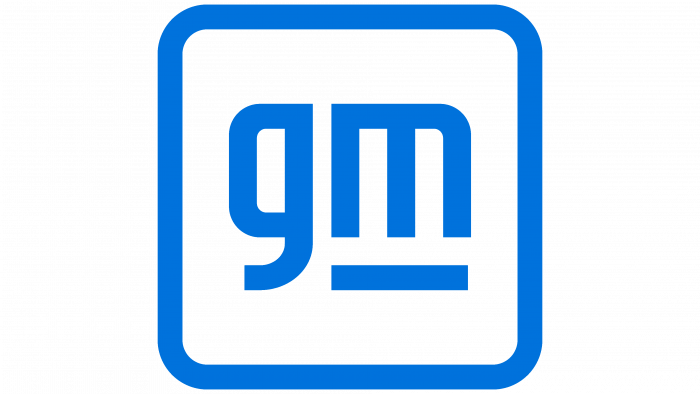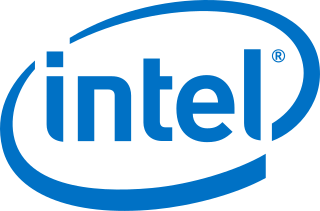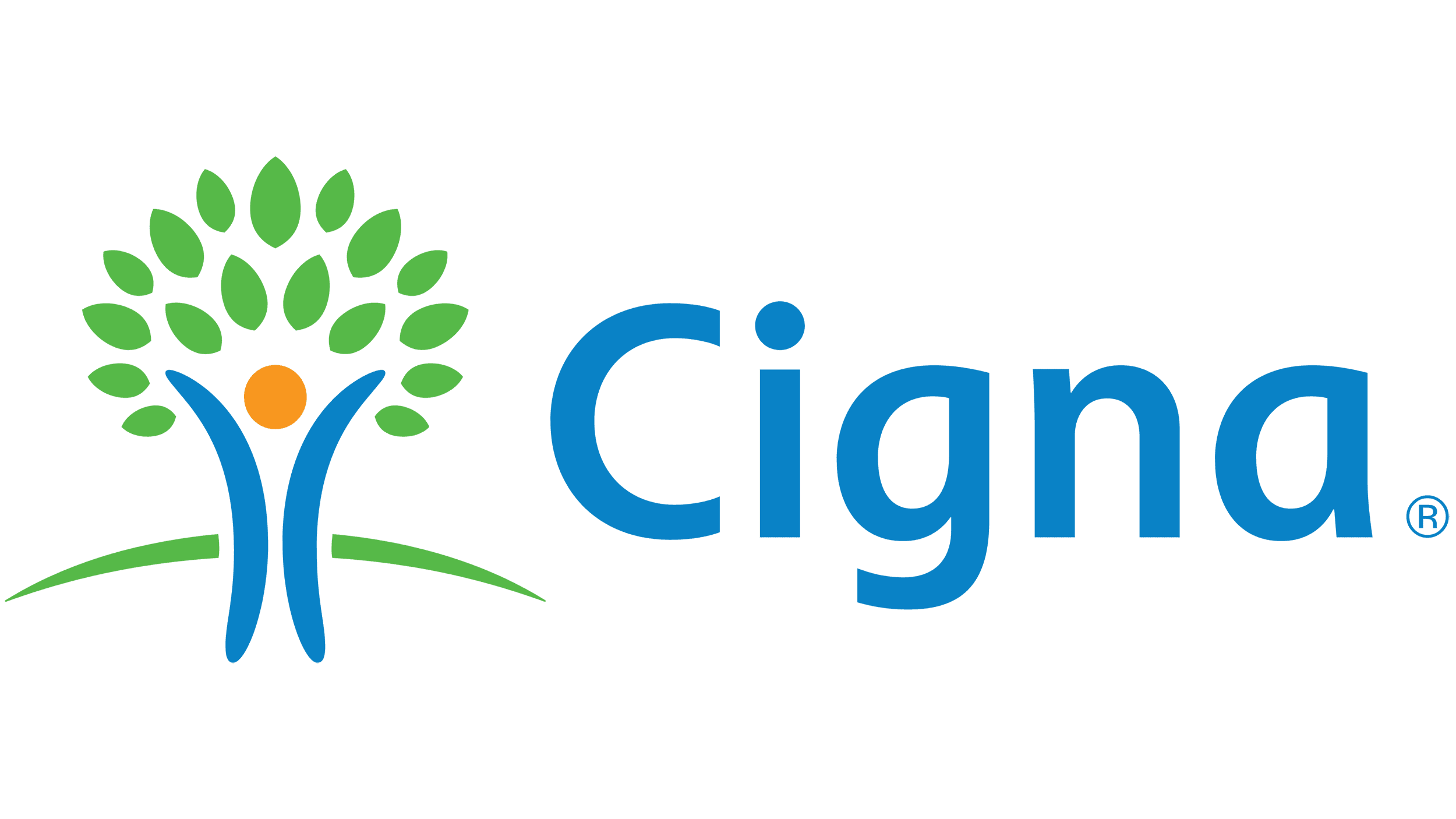Discovering Technological Advances in Job Searching
In today’s dynamic and digitally-driven landscape, executive job searching has undergone a remarkable evolution, catalyzed by groundbreaking technological advancements. Gone are the days of scouring newspapers or relying solely on word-of-mouth to secure employment. The digital era has ushered in a new paradigm, one where job seekers wield a vast array of technological tools and resources at their fingertips. In this blog post, we will embark on a journey through this transformative realm of digital job searching, exploring the precise technological innovations that have reshaped the job market.
Consider this: According to recent industry data, more than 70% of job seekers initiate their search online, with platforms like LinkedIn, Indeed, and ZipRecruiter becoming veritable hubs of opportunity. This staggering statistic underscores the pivotal role that technology now plays in the job search process, and it’s not merely about the channels through which jobs are found; it’s about the depth of change that technology has brought to every facet of the job search journey.
As we delve deeper into this subject, we will navigate through the advanced realms of artificial intelligence, virtual interviews, and cutting-edge digital organizational tools. These technological pillars are reshaping the way job seekers approach their quest for the perfect role, making the process more efficient and effective than ever before.
So, fasten your seatbelts as we embark on this expedition into the heart of technological innovation in job searching. Together, we’ll explore not just the advancements themselves, but also the strategies and techniques that will empower you to harness the full potential of these technologies in your quest for career success.
Key Takeaways
- Embrace technology in job search to access resources and increase visibility.
- Utilize ATS, social media/networking platforms & niche job boards for better opportunities.
- Leverage AI tools, virtual interviews & digital organization skills to maximize benefits of technology in the job hunt.
Want to save time?
Let us help you land your next executive position by crafting the best resume or by managing your entire job search. Here’s more information about our Executive Resume Writing Services and Reverse Recruitment Service. Book a call today to speak directly with our CEO and Founder, Arno Markus!
Industry Stats: According to the U.S. Bureau of Labor Statistics (BLS), the employment of top executives is projected to grow 6% from 2021 to 2031, which is about as fast as the average for all occupations.
Embracing Technology in Job Searching
The digital age has transformed the recruitment and hiring process, necessitating job seekers to integrate technology into their job search. We’ll examine some key job search technology tools that can enhance your visibility in the digital job search arena.
Applicant Tracking Systems (ATS)
An Applicant Tracking System (ATS) is a software solution utilized by Human Resources departments to effectively manage the recruitment process. They help by filtering and sorting resumes, making it easier for job seekers to find job postings that match their skills and experience. Employers leverage applicant tracking systems to:
- Reduce administrative overhead
- Optimize productivity
- Reduce expenses
- Make it easier for hiring managers to find the right candidates
A vast majority of Fortune 500 companies, around 99%, use a major ATS to filter candidates. For job seekers to maximize their chances and appeal to hiring managers, it’s beneficial to tailor their resumes for these systems.
Ensuring that resumes include key information such as:
- Name
- Current and previous titles and companies
- Start and end dates of previous positions
- Start date of current position
- Education
can make them more ATS-friendly.
Social Media and Networking Platforms
In today’s digital world, social media accounts and networking platforms have become increasingly important for job seekers to showcase their skills, connect with potential employers, and discover job opportunities. LinkedIn, for example, is the most commonly used platform by recruiters for recruitment purposes. As a job seeker, it’s vital to ensure that your publicly available information on social media is presented in a professional manner.
Optimizing your LinkedIn profile, engaging in industry-specific groups, and participating in conversations can serve as avenues to expand your network and discover job opportunities. Additionally, following companies and recruiters on platforms like Twitter and Facebook can keep you updated on job openings and hiring updates. Utilizing social media platforms effectively can significantly enhance your job search and help you stand out in the competitive job market.
AI-Powered Networking for Industry Influencers and Mentorship:
In today’s hyper-connected digital world, networking goes far beyond just building a list of contacts. It’s about establishing meaningful connections with industry leaders, influencers, and potential mentors. Artificial intelligence (AI) plays a pivotal role in not only identifying these individuals but also in facilitating the process of connecting with them.
- AI-Powered Relationship Mapping:
-
- AI algorithms can analyze your professional network, including your connections on platforms like LinkedIn, to identify potential mentors or industry influencers. These algorithms consider factors such as common connections, shared interests, and professional backgrounds to suggest relevant individuals.
- Once identified, AI can create visual relationship maps that highlight how you are connected to these influential figures. This allows you to see the shortest path to establishing a connection.
- Content-Based Recommendations:
-
- AI-driven platforms can analyze the content shared by industry influencers and mentors. By understanding their interests and expertise, AI algorithms can recommend articles, posts, or discussions that align with their areas of focus.
- Engaging with content shared by these influencers not only demonstrates your interest but can also lead to organic connections as they notice your thoughtful contributions.
- AI-Enhanced Messaging:
- AI can assist in crafting personalized and engaging messages when reaching out to potential mentors or influencers. These algorithms can analyze your target’s public profile and previous interactions to suggest message templates that resonate.
- Additionally, AI can provide real-time insights into when the best time to send a message is, increasing the chances of a prompt and positive response.
- Engagement Tracking:
- AI can help you track the engagement of your messages and interactions with influencers or potential mentors. It can analyze response rates, message open rates, and follow-up actions to help you refine your networking strategy.
- By understanding what works and what doesn’t, you can continually improve your approach and build more meaningful connections.
Case Study: Leveraging AI for Mentorship Success
Let’s consider a hypothetical scenario where a job seeker, Sarah, is looking to transition into a new field. AI-driven networking tools analyze her career aspirations, skills, and professional network. The AI suggests a seasoned industry expert, John, as a potential mentor based on shared interests and complementary skill sets.
Sarah uses AI-generated insights to engage with John’s content, and after a few interactions, she reaches out with a personalized message. John, impressed by Sarah’s proactive approach and well-informed questions, agrees to mentor her. Through regular virtual meetings and guidance, Sarah successfully makes her career transition with John’s mentorship.
In conclusion, AI-powered networking not only helps identify industry influencers and potential mentors but also streamlines the process of connecting with them. By utilizing AI algorithms to enhance your networking efforts, you can increase your chances of establishing valuable relationships that contribute to your professional growth and success.
Niche Job Boards and Aggregators
Niche job boards are specialized platforms that cater to specific industries or roles, offering higher caliber candidates, reduced competition, cost-effectiveness, enhanced branding, and specialized job postings. For example, some of the top-rated niche job boards for technology roles include AngelList Talent, Authentic Jobs, BuiltIn, CrunchBoard, Dice, Hired, and Jobspresso.
Job aggregators, on the other hand, are search engines for job ads that collect job postings from different sources and present them to job seekers in accordance with their search parameters. Making use of niche job boards and aggregators enables job seekers to find specialized opportunities that align with their skills and interests, thereby increasing the likelihood of securing the perfect job.
The role of technology in job searching has evolved beyond the mere facilitation of job postings and applicant tracking. Today, advanced technologies such as data analytics, machine learning, and natural language processing (NLP) are playing a pivotal role in reshaping the entire recruitment process. Let’s delve into each of these advanced topics and understand their transformative impact:
- Data Analytics:
– Data-Driven Decision Making: Data analytics in job searching involves the collection and analysis of vast amounts of data to inform decision-making. Employers and job search platforms are leveraging data analytics to gain insights into candidate behavior, job market trends, and the effectiveness of job listings.
– Personalization: By analyzing the historical data of job seekers and employers, platforms can personalize job recommendations. Advanced algorithms consider a candidate’s skills, experience, and preferences to suggest highly relevant job opportunities.
– Market Intelligence: Employers are using data analytics to understand competitor hiring trends, salary benchmarks, and regional talent shortages, allowing them to refine their recruitment strategies.
- Machine Learning:
– Resume Screening: Machine learning algorithms are used to screen and rank resumes based on their relevance to job postings. These algorithms can identify keywords, skills, and qualifications, making the initial selection process more efficient.
– Predictive Analytics: Machine learning models are employed to predict a candidate’s likelihood of success in a particular role based on their profile and past hiring data. This helps employers make more informed hiring decisions.
– Chatbots and Virtual Assistants: Machine learning powers chatbots and virtual assistants that engage with job seekers in real-time, answer questions, and provide guidance throughout the application process.
- Natural Language Processing (NLP):
– Sentiment Analysis: NLP is used to analyze the sentiment of job descriptions and candidate resumes. It helps employers create job postings that are more appealing and identifies potential biases in language.
– Language Translation: NLP facilitates the translation of job postings and applications, enabling employers to tap into a global talent pool. This is particularly valuable for multinational companies.
– Chatbots and Chat Support: NLP-driven chatbots can understand and respond to natural language queries from job seekers, enhancing the user experience and providing instant support.
How These Technologies Are Shaping the Recruitment Process:
– Efficiency: These technologies automate time-consuming tasks such as resume screening and initial candidate outreach, significantly reducing the time-to-hire for employers.
– Improved Matching: Advanced algorithms ensure that job seekers are matched with positions that align with their skills and career goals, increasing the likelihood of a successful placement.
– Reduced Bias: Machine learning and NLP algorithms are programmed to minimize bias in the hiring process by focusing on skills and qualifications rather than demographic factors.
– Data-Backed Decisions: Employers can make data-backed decisions about their hiring strategies, which leads to better recruitment outcomes and a more competitive advantage in the talent market.
– Enhanced User Experience: Job seekers benefit from personalized job recommendations, real-time assistance, and streamlined application processes, improving their overall job search experience.
In summary, the infusion of data analytics, machine learning, and natural language processing into the job searching and recruitment process has ushered in a new era of efficiency, accuracy, and fairness. These technologies are not just shaping recruitment; they are revolutionizing it, making it more responsive to the needs of both employers and job seekers in today’s rapidly evolving job market.
The Power of Artificial Intelligence in Job Hunting
Artificial Intelligence (AI) has been making waves in various sectors, including job hunting. AI-powered tools like resume optimization and skill development platforms are transforming the way job seekers approach their job search, making the process more efficient and effective.
We’ll discuss how AI is reshaping job hunting and the ways you can utilize these innovative tools to secure your dream job.
AI-Powered Resume Optimization
AI-powered resume optimization tools, like Jobscan, can help job seekers improve their resumes by:
- Matching keywords and optimizing content for ATS
- Streamlining resume writing
- Enhancing keyword recognition
- Improving formatting
- Personalizing and customizing resumes
- Automating candidate selection
- Checking grammar and spelling
These tools offer several advantages for job seekers, including access to job listings with detailed job descriptions.
Scanning your resume with Jobscan’s resume scanner allows you to evaluate its ATS-friendliness and make the necessary adjustments to enhance its compatibility with ATS. Furthermore, Jobscan’s converter tool can scan your resume and align it with the particular job you are applying for, guaranteeing that it is in an ATS-friendly format.
Other popular AI-powered resume optimization tools worth exploring include:
- Enhancv
- DocHipo
- Zety Resume Builder
- Best Resume
- Teal
- Rezscore
- Rezi
Skill Development and Training
Skill development and training platforms, such as LinkedIn Learning, offer job seekers the opportunity to gain essential skills and certifications to enhance their employability. LinkedIn Learning provides various avenues for skill development, such as:
- Learning paths for in-demand jobs
- Job searching courses
- Popular courses among job seekers
- Courses on profile and brand development
- A platform for professionals to find new jobs
The current job market values skills such as:
- Management
- Communication
- Customer service
- Leadership
- Sales
- Project management
- Research
- Analytical skills
- Marketing
- Teamwork
Platforms like Udemy, Coursera, LinkedIn Learning, Skillshare, and Udacity provide avenues for job seekers to acquire these skills and enhance their prospects of securing the right job opportunity.
How technology has revolutionized job searching
- LinkedIn – Transforming Professional Networking:
– LinkedIn has become synonymous with professional networking. It offers job seekers advanced features like “Open to Work” status and AI-powered job recommendations.
– Case Study: During the COVID-19 pandemic, LinkedIn introduced a feature that allowed users to share their skills and expertise through free courses. This initiative not only helped job seekers upskill but also showcased their talents to potential employers.
- Indeed – Data-Driven Job Insights:
– Indeed leverages data analytics to provide job market insights to both job seekers and employers. They offer real-time data on job postings, salary trends, and the popularity of specific job titles.
– Case Study: During the pandemic, Indeed tracked job postings related to remote work. This data revealed the surge in remote job opportunities, influencing many job seekers to explore remote work options.
- ZipRecruiter – AI-Powered Matching:
– ZipRecruiter utilizes AI and machine learning to match job seekers with suitable job listings. Their algorithm considers factors beyond skills, such as culture fit and company values.
– Case Study: ZipRecruiter reported a significant increase in job applications and hires during the COVID-19 pandemic, showcasing the effectiveness of their AI-powered matching technology in connecting job seekers with relevant opportunities.
- Glassdoor – Employer Transparency:
– Glassdoor is known for its company reviews and salary information. It empowers job seekers with insights into company culture and salary expectations.
– Case Study: Research conducted by Glassdoor showed that companies with positive employee reviews were more likely to attract top talent. Job seekers increasingly rely on such transparency when evaluating potential employers.
- Google for Jobs – Streamlined Job Search:
– Google for Jobs aggregates job listings from various sources and displays them prominently in search results. It simplifies job searching by offering filters and location-based results.
– Case Study: Google for Jobs has significantly increased the visibility of job postings. A study by Joveo found that job listings on Google for Jobs received 65% more clicks than other job search engines.
- IBM Watson – AI-Enhanced Recruitment:
– IBM Watson’s AI technology is used by companies like Hilton to enhance recruitment processes. It analyzes resumes, conducts interviews, and identifies the best-fit candidates.
– Case Study: Hilton reported a 40% reduction in time-to-fill for open positions after implementing IBM Watson’s AI technology, demonstrating the efficiency and accuracy of AI in candidate selection.
- Monster Studios – Video Job Postings:
– Monster Studios enables employers to create video job postings, allowing job seekers to see and hear about job opportunities directly from hiring managers.
– Case Study: A study by Monster revealed that job postings with video content had a 34% higher application rate, showcasing the impact of multimedia job listings on candidate engagement.
These case studies and examples highlight how technology has transformed job searching by offering data-driven insights, personalized job matching, enhanced transparency, and efficiency in the recruitment process. Leading companies and platforms continue to innovate, making job searching more accessible and effective for job seekers in today’s digital age.
Virtual Interviews: Adapting to a New Normal
The COVID-19 pandemic has dramatically changed the way interviews are conducted, with virtual interviews via video calls and Zoom becoming the new normal in various sectors and industries. As a job seeker, adapting your interview skills and preparation methods is key to succeeding in this new format.
In the ensuing sections, we will provide tips for preparing for virtual interviews and adapting in-person interview skills to video.
Preparing for Virtual Interviews
Preparing for virtual interviews involves setting up a professional environment, testing technology, and practicing on-camera communication. Ensuring your technology is working properly, donning professional attire, being prepared, limiting distractions, and maintaining a poised and professional demeanor are all essential elements for establishing a professional environment in virtual interviews.
Prior to a virtual interview, it is imperative to:
- Test the technology to guarantee a seamless experience.
- Verify your internet connection.
- Assess your audio and video.
- Become acquainted with the software.
- Test your equipment.
- Undertake a practice interview.
By being well-prepared for virtual interviews, you can significantly increase your chances of success.
Translating In-person Interview Skills to Video
Translating in-person interview skills to video requires maintaining eye contact, engaging body language, and clear communication. Here are some tips to help you maintain eye contact during virtual interviews:
- Aim for 60-70% eye contact during the interview and look directly at the interviewer’s eyes for about 70% of the time, then look away for the rest.
- Use the triangle technique by looking at the interviewer’s eyes, then their mouth, and then back to their eyes.
- Remember to look at the camera to give the impression of eye contact.
These techniques will help you demonstrate engagement and attentiveness during virtual interviews.
In addition to maintaining eye contact, here are some tips for virtual interviews:
- Sit up straight
- Lean in
- Keep gestures minimal
- Avoid crossing arms
- Have a confident and enthusiastic tone of voice
By effectively translating your in-person interview skills to video, you can showcase your abilities and leave a lasting impression on your potential employer.
Overcoming Challenges in the Digital Job Search
While technology has undoubtedly revolutionized the job search process, it also presents certain challenges that job seekers need to overcome. In this section, we will propose strategies to overcome the digital divide and mitigate online discrimination, promoting equal access to opportunities and fairness in the hiring process.
Bridging the Digital Divide
The digital divide has a significant impact on job searching, as it creates unequal access to digital technology and the internet for job search purposes, limiting job opportunities and impeding the ability to compete in the job market for those who do not have access to digital technology or lack the required digital skills. One approach to bridging the digital divide in job searching is to offer digital skills training and support to individuals in order to enhance their digital literacy and proficiency in using technology for career development.
Investing in digital education and strengthening broadband infrastructure are also crucial for bridging the digital divide. Governments and organizations are taking various steps to ensure equitable access to digital resources for job seekers, such as:
- Microsoft’s initiative to aid 25 million people in acquiring digital skills
- The Infrastructure Investment and Jobs Act emphasizing equal access to broadband internet
- The Workforce Innovation and Opportunity Act (WIOA) providing support services for job seekers
- Various digital equity initiatives focusing on reducing barriers and promoting inclusion
Avoiding Online Discrimination
Online discrimination is another challenge that job seekers need to be aware of when using technology for job searching. Social media platforms can facilitate hiring discrimination by exhibiting job ads selectively to different groups of workers. Investigations have identified multiple cases where major employers made use of Facebook to spread job postings specifically to young users’ feeds. These companies include Verizon Communications, Inc., The Goldman Sachs Group, Inc. and Target Corporation. This method was used to exclude candidates aged 40 or above..
To help prevent online discrimination, job seekers should exercise caution when sharing personal information on social media and be mindful of potential biases in automated hiring systems. By being vigilant about the potential pitfalls of online discrimination and taking proactive steps to avoid it, you can ensure a fair and equitable job search process.
Maximizing the Benefits of Technology in Job Searching
Having discussed the importance of technology in job searching and its potential challenges, our focus now shifts to how to maximize its benefits. By staying organized with digital tools and diversifying job search methods, you can increase your chances of finding the right job opportunity in the digital age.
In the succeeding sections, we will delve into strategies for maintaining organization with digital tools and diversifying job search methods.
Staying Organized with Digital Tools
Staying organized with digital tools, such as spreadsheets and folders, can help job seekers track their applications, follow-ups, and progress. Spreadsheets can be effectively utilized to organize a job search by:
- Creating columns for job title, company, application status, contact information, and interview dates
- Employing filters and sorting functions to track and prioritize applications
- Including notes and reminders in separate columns to ensure key details and follow-ups are not forgotten
By using these tools, job seekers can attract hiring managers, stay organized, and increase their chances of success in their job search.
Maintaining organization with digital tools not only helps you keep track of your job applications but also ensures that no opportunities are missed. This will ultimately help you stay focused and motivated throughout your job search journey.
Diversifying Job Search Methods
While technology has made job searching more accessible and efficient, it’s crucial not to rely solely on digital platforms for finding job opportunities. Diversifying job search methods, such as networking and word-of-mouth, can significantly enhance the likelihood of locating an ideal job opportunity in the modern digital age.
Savvy job seekers advise that searching for a job should be done before one is needed or desired. Networking plays a vital role in being prepared prior to initiating your search for your ideal job. By leveraging social media platforms for networking, joining industry-specific groups, participating in conversations, and following companies and recruiters on platforms like Twitter and Facebook, you can expand your network and uncover job opportunities.
Diversifying job search methods and maintaining a proactive approach in your job search journey enhances your likelihood of uncovering the perfect job opportunity in the digital age.
Summary
In conclusion, technology has brought about significant changes in the job search landscape, offering both opportunities and challenges for job seekers. By embracing technology and leveraging AI-powered tools, virtual interviews, and a diverse array of job search methods, job seekers can navigate the digital job search arena more efficiently. By staying organized with digital tools, bridging the digital divide, and avoiding online discrimination, job seekers can maximize the benefits of technology and increase their chances of landing the perfect job in the digital age. So, go ahead and harness the power of technology to take your job search to new heights!
Frequently Asked Questions
Technology has revolutionized the job search process, providing convenience through access to a vast pool of job opportunities and powerful AI-based resume searches. Job seekers are now empowered to find and apply to jobs more effectively with the click of a button.
Technology is making our jobs easier by improving communication, replacing existing tasks with automation, and increasing productivity and efficiency. Through improved collaboration, access to knowledge, and digital tools, organizations are achieving rapid growth in their productivity and efficiency.
Essential tools for job searching in the digital age include applicant tracking systems (ATS), social media and networking platforms, niche job boards, and AI-powered resume optimization tools.
Prepare for virtual interviews by creating a professional environment, testing your technology, and rehearsing on-camera communication to ensure the best experience.
Be mindful of what you share on social media, exercise caution when sharing personal information, and consider potential biases in automated hiring systems to avoid online discrimination during job searching.
About iCareerSolutions
iCareerSolutions, America’s #1 Executive and Professional Resume Writing Services, Reverse Recruitment, and LinkedIn Profile Development Company. 28X award-winning resume writers deliver professional resumes that get interviews. We have successfully landed our executive clients senior-level leadership positions at companies like Apple, Amazon, EA, Oracle, GM, Google, Facebook, DoJ, Gap, and 2U just to name a few. iCareerSolutions has 200+ 5-star reviews and offers a 60-day interview guarantee. Every resume template created is Applicant Tracking Systems (ATS) compatible and highly customized to meet your unique needs.
Active Members of The National Resume Writers’ Association (NRWA) │ The Professional Association of Resume Writers & Career Coaches (PARW&CC) │ Career Directors International (CDI) │ Career Professionals (CPC) │ Forbes Coaches Council
One of the Top Multi-Award-Winning Resume Writing Services in the country.
Book a complimentary consultation for your Professionally Managed Job Search now!


Employers who have Onboarded Our Clients






































